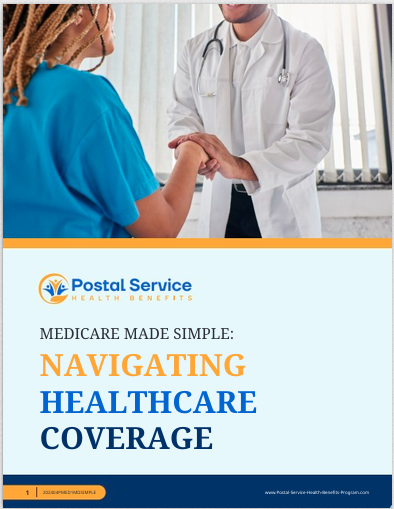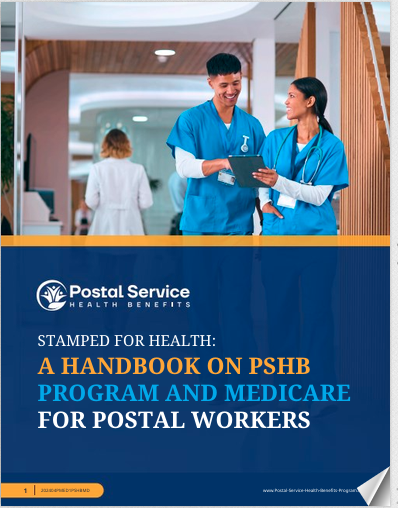Key Takeaways
- Future postal retirees will soon need to enroll in Medicare Part B to retain health coverage under the new PSHB program.
- Knowing the enrollment periods and understanding how Medicare coordinates with postal health benefits will be essential for a smooth transition.
Future Postal Retirees, Get Ready—Medicare Part B Enrollment Will Soon Be Mandatory, and Here’s How It All Fits Together
For postal employees nearing retirement, significant changes are coming that will impact their healthcare coverage. Starting in 2025, Medicare Part B enrollment will become mandatory for all future retirees who wish to maintain their health benefits through the new Postal Service Health Benefits (PSHB) program. This change aims to reduce long-term healthcare costs and improve coordination between Medicare and the USPS health plans, but it also requires careful planning. Here’s what you need to know about this major shift and how it all fits together.
Why is Medicare Part B Enrollment Becoming Mandatory?
The requirement for Medicare Part B enrollment stems from the Postal Service Reform Act of 2022, designed to streamline and modernize the U.S. Postal Service (USPS). One of the Act’s key components is the introduction of the PSHB program, which will replace the Federal Employees Health Benefits (FEHB) coverage for postal retirees. This new structure, managed by the Office of Personnel Management (OPM), ensures that future postal retirees have a dedicated health benefits program tailored to their needs. To make this system sustainable, it mandates that Medicare-eligible retirees enroll in Part B.
The integration of Medicare Part B allows the USPS to reduce duplicative coverage costs. By enrolling in Medicare, retirees’ medical expenses, such as doctor visits and outpatient care, are primarily covered by Medicare Part B, with the PSHB plan acting as a secondary payer. This coordinated approach helps the USPS lower its financial liabilities and ensures retirees receive comprehensive medical care without redundancy.
How Will the PSHB Program Work?
The PSHB program is structured similarly to FEHB plans, providing postal retirees with options for health benefits that complement their Medicare coverage. While the PSHB plans will be administered under the umbrella of OPM, they will be specifically designed for postal employees and retirees. This specialized approach aims to address the unique needs of this population while keeping healthcare costs manageable for the USPS.
From 2025 onwards, newly Medicare-eligible postal retirees and their family members will need to enroll in Medicare Part B to maintain their PSHB health benefits. The PSHB plans will then provide secondary coverage, helping to cover costs that Medicare does not fully pay for, such as deductibles and coinsurance. This layered system ensures that retirees have a more comprehensive health plan, covering a broad range of services.
What is the Special Enrollment Period (SEP) for Medicare Part B?
To facilitate this transition, the USPS offers a Special Enrollment Period (SEP) for Medicare Part B in 2024. This SEP runs from April 1 through September 30, allowing future retirees and their eligible family members who have not yet enrolled in Medicare Part B to do so without penalties. This opportunity is critical because, outside the SEP, individuals typically face a late enrollment penalty—an extra 10% on their Medicare premium for every year they were eligible but did not enroll.
The penalty-free SEP is specifically designed to encourage timely enrollment, ensuring retirees can smoothly transition into the PSHB program with all required coverage in place. The USPS and OPM are working together to notify eligible postal employees and retirees, providing them with information and resources to help them understand and navigate this important enrollment period.
What Happens If Retirees Don’t Enroll in Medicare Part B?
Retirees who fail to enroll in Medicare Part B during the SEP or before they become eligible in 2025 risk losing their PSHB coverage. Without Part B, the PSHB plan will not provide full benefits, as it is structured to work in tandem with Medicare. Those who miss this enrollment opportunity might need to secure private insurance, which is typically more expensive and may not offer as comprehensive coverage as the combined Medicare and PSHB options.
Understanding the Coordination Between Medicare and PSHB
The new PSHB program aims to simplify and improve healthcare delivery for postal retirees by coordinating benefits with Medicare Part B. Here’s a breakdown of how this works:
-
Primary and Secondary Payers: Medicare Part B becomes the primary payer, covering outpatient services, doctor visits, preventive care, and other medical services. PSHB plans then serve as the secondary payer, picking up where Medicare leaves off—covering additional costs like copayments and coinsurance that would otherwise come out of pocket.
-
Integration with Medicare Part D: The PSHB program will also include integrated prescription drug benefits that align with Medicare Part D. This coordination ensures that retirees do not need to sign up for a separate Medicare Part D plan. PSHB plans will automatically enroll retirees into a group Part D plan, providing comprehensive drug coverage and further reducing costs through Medicare’s negotiated discounts.
-
Special Benefits and Cost Reductions: By requiring Medicare Part B enrollment, the PSHB program may also offer incentives such as premium reimbursement, lower deductibles, and reduced out-of-pocket costs. These incentives make the combined coverage of Medicare and PSHB not only seamless but also cost-effective for retirees.
Are There Exceptions to the Enrollment Rule?
While most Medicare-eligible retirees must enroll in Part B to maintain PSHB coverage, there are exceptions under the new legislation:
-
Current Retirees as of January 1, 2025: If you are already retired and not enrolled in Medicare Part B by this date, you are not required to enroll to keep your PSHB benefits.
-
Retirees Living Abroad: Postal retirees who reside outside of the United States are exempt from the Medicare Part B enrollment requirement.
-
Veterans and Indian Health Service Beneficiaries: Those who receive healthcare from the Department of Veterans Affairs (VA) or the Indian Health Service (IHS) are not required to enroll in Medicare Part B under the PSHB system.
How to Prepare for the Changes
As the transition to the PSHB program approaches, future retirees must prepare to ensure they understand and meet all enrollment requirements. Here are some critical steps:
-
Review the Special Enrollment Period: Confirm eligibility for the SEP and enroll within the designated timeframe. This action will prevent any penalties and guarantee uninterrupted coverage through the PSHB program.
-
Evaluate PSHB Plan Options During Open Season: Postal retirees will have the opportunity to compare PSHB plan options during the 2024 Open Season, which runs from November 11 through December 9. This period allows individuals to select the plan that best fits their healthcare needs and aligns with their Medicare coverage.
-
Stay Informed Through Official Channels: Retirees should attend USPS-hosted webinars, review information packets from OPM, and consult the USPS Health Benefits Education Program resources. This ensures they are making well-informed decisions that protect their health and finances.
Potential Cost Savings from PSHB-Medicare Integration
The alignment of Medicare Part B with PSHB provides several financial advantages for postal retirees:
-
Reduced Premium Costs: Some PSHB plans may offer partial or full reimbursements for Medicare Part B premiums, helping retirees manage the monthly expense.
-
Lower Out-of-Pocket Expenses: By coordinating coverage between Medicare and PSHB, retirees may experience reduced out-of-pocket costs, including waived deductibles and reduced copayments for specific services.
-
Integrated Prescription Coverage: The PSHB’s automatic enrollment in a group Part D plan will simplify prescription drug benefits and allow retirees to benefit from Medicare’s cost savings programs.
What’s Next for Future Postal Retirees?
The new PSHB program and its Medicare Part B requirement mark a significant shift for future postal retirees. While these changes aim to streamline the system and reduce costs, they also require careful planning and awareness. Understanding the enrollment timelines, the coordination of benefits, and the cost-saving opportunities are key to ensuring a successful transition into retirement.
For retirees, the 2024 SEP is a crucial window to secure coverage without penalties. Retirees should prioritize enrolling during this period and staying informed through USPS and OPM resources to make well-rounded healthcare decisions that align with their needs and budget.
Get Ready for the Future of Postal Health Benefits
Navigating the Medicare Part B enrollment requirement is essential for securing comprehensive health benefits under the PSHB program. Postal retirees must take proactive steps to understand their obligations and optimize their healthcare options.







